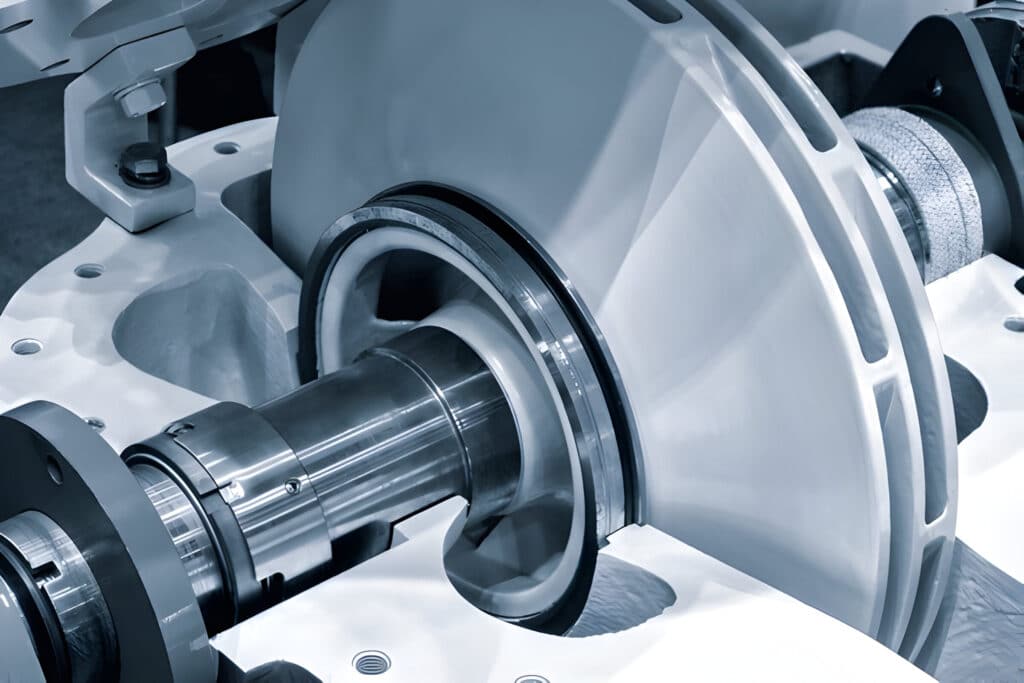In high-temperature industrial environments, maintaining the integrity and reliability of mechanical seals is paramount. Specialized materials and designs are required to withstand extreme thermal stresses and prevent leakage in critical applications.
This article will explore the key considerations and solutions for mechanical seals operating in high-temperature conditions.

Common Failure Modes Due to High Temperatures
Thermal Degradation of Seal Face Materials
High temperatures can cause thermal degradation of the seal face materials, leading to premature wear and failure. The heat generated during operation can break down the molecular structure of the seal faces, causing them to lose their mechanical properties and dimensional stability. This deterioration can result in increased leakage, reduced sealing effectiveness, and ultimately, seal failure.
Thermal Expansion and Distortion
Differential thermal expansion between the seal components and the surrounding equipment can cause distortion and misalignment of the seal faces. As the temperature rises, the various materials expand at different rates, potentially creating gaps or causing the seal faces to warp. This distortion can lead to increased leakage, accelerated wear, and reduced sealing performance.
Lubricant Breakdown and Carbonization
High temperatures can cause the breakdown and carbonization of lubricants used in mechanical seals. The heat can degrade the lubricant’s properties, reducing its effectiveness in minimizing friction and wear between the seal faces. Carbonization occurs when the lubricant breaks down and forms hard, abrasive carbon deposits on the seal faces, leading to accelerated wear and leakage.
Secondary Seal Degradation
The high-temperature environment can also affect the secondary seals, such as O-rings or gaskets, used in mechanical seals. These seals are typically made of elastomeric materials that can degrade and lose their elasticity when exposed to high temperatures. Degradation of the secondary seals can result in leakage, compromising the overall sealing performance of the mechanical seal.
Thermal Shock and Cycling
Rapid temperature changes, known as thermal shock, can cause significant stress on the mechanical seal components. Thermal cycling, where the seal experiences repeated heating and cooling cycles, can lead to fatigue and cracking of the seal faces and other components. These thermal stresses can reduce the seal’s lifespan and increase the likelihood of premature failure.
Types of Mechanical Seals for High Temperatures
When selecting mechanical seals for high-temperature applications, it’s important to consider the specific design features that enable reliable operation under extreme conditions. The following types of mechanical seals are commonly used in high-temperature environments:
Single Seals
Single mechanical seals consist of a single set of sealing faces, typically made from materials capable of withstanding high temperatures. These seals are often used in applications where the process fluid is not highly volatile or hazardous. The primary sealing face materials for high-temperature single seals include:
- Silicon carbide: Offers excellent heat resistance and thermal shock resistance
- Tungsten carbide: Provides high hardness and wear resistance at elevated temperatures
- Carbon graphite: Exhibits good thermal conductivity and self-lubricating properties
To enhance the performance of single seals in high-temperature applications, additional features such as cooling jackets, heat dissipation fins, and thermal barriers can be incorporated into the seal design.
Double Seals
Double mechanical seals provide an added layer of protection in high-temperature environments, making them suitable for applications involving hazardous or volatile fluids. These seals consist of two sets of sealing faces, with a barrier fluid circulated between them. The barrier fluid serves to lubricate the sealing faces, dissipate heat, and prevent process fluid from escaping to the atmosphere.
Some commonly used barrier fluids include:
- Glycol-based fluids: Offer good thermal stability and heat transfer properties
- Perfluoropolyether (PFPE) fluids: Provide excellent chemical and thermal resistance
- Silicone-based fluids: Exhibit good thermal stability and low volatility
Double seals for high-temperature applications may also incorporate cooling systems, such as heat exchangers or air coolers, to maintain the barrier fluid temperature within acceptable limits.
Cartridge Seals
Cartridge mechanical seals are pre-assembled units that combine the sealing components, gland plate, and sleeve into a single, easy-to-install package. These seals offer several advantages in high-temperature applications, including:
- Simplified installation and maintenance: Cartridge seals reduce the risk of incorrect assembly and minimize downtime during seal replacement
- Improved seal face alignment: The pre-assembled design ensures proper alignment of the sealing faces, reducing the risk of premature failure due to misalignment
- Enhanced leak prevention: Cartridge seals often incorporate secondary sealing elements, such as O-rings or gaskets, to prevent leakage between the seal components and the equipment
Material Selection
| Material | Temperature Range (°C) | Advantages | Disadvantages |
|---|---|---|---|
| Fluoroelastomers (FKM) | -20 to 200 | Excellent chemical resistance, good mechanical properties | Limited high-temperature performance, may degrade above 200°C |
| Perfluoroelastomers (FFKM) | -20 to 300 | Superior chemical resistance, maintains properties at high temperatures | High cost, limited availability |
| Graphite | Up to 500 | High thermal conductivity, low friction, excellent chemical resistance | Brittle, prone to oxidation at high temperatures |
| Silicon Carbide (SiC) | Up to 1400 | Extreme hardness, wear resistance, and chemical inertness | High cost, brittle, requires precise installation |
| Tungsten Carbide (WC) | Up to 500 | High hardness, wear resistance, and thermal conductivity | Expensive, prone to thermal shock |
| Nickel Alloys (e.g., Hastelloy, Inconel) | Up to 1000 | Excellent corrosion resistance, high strength at elevated temperatures | High cost, difficult to machine |





